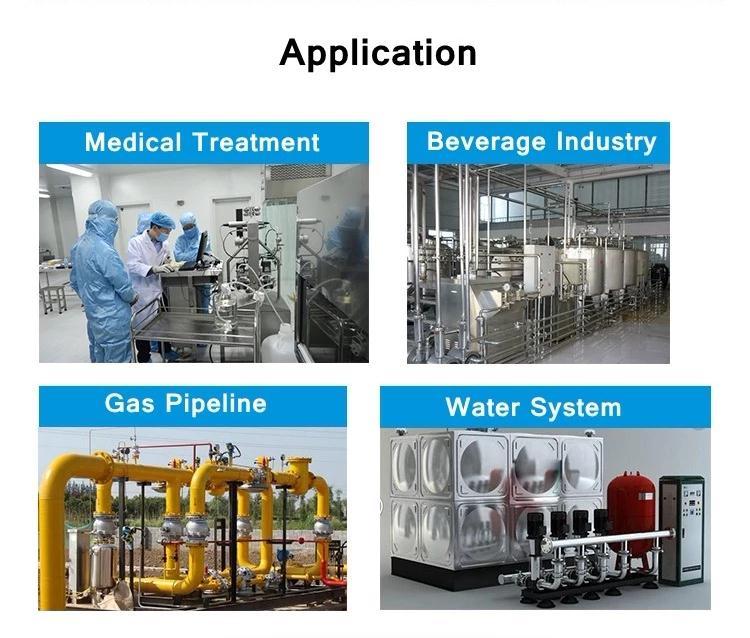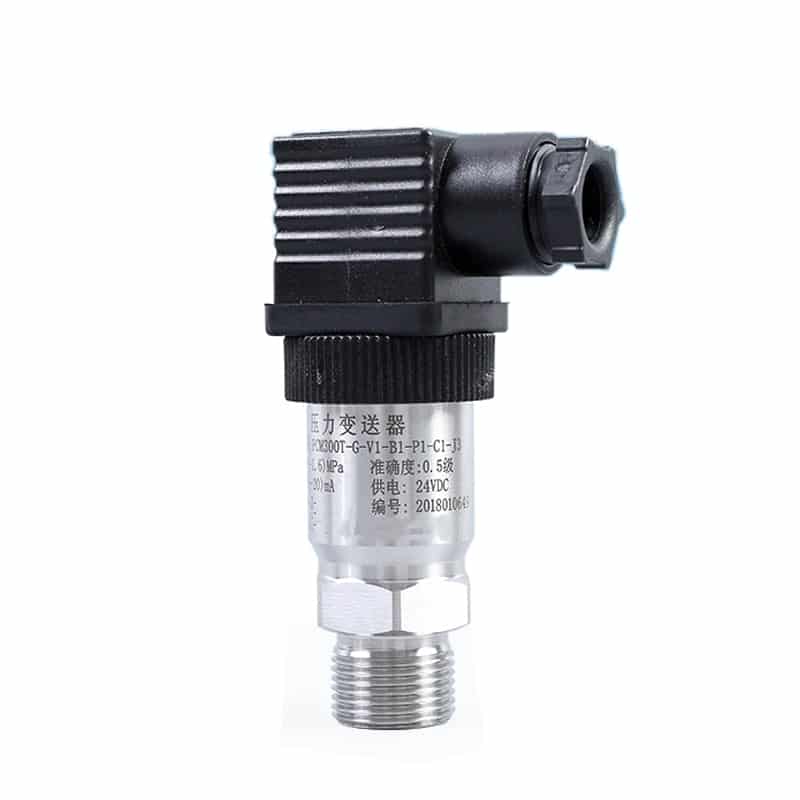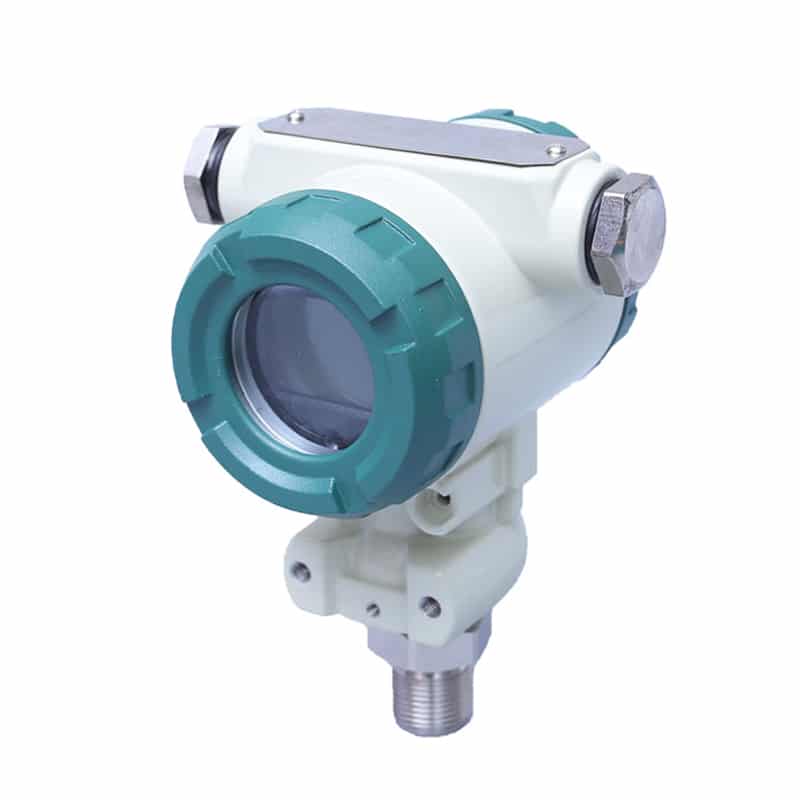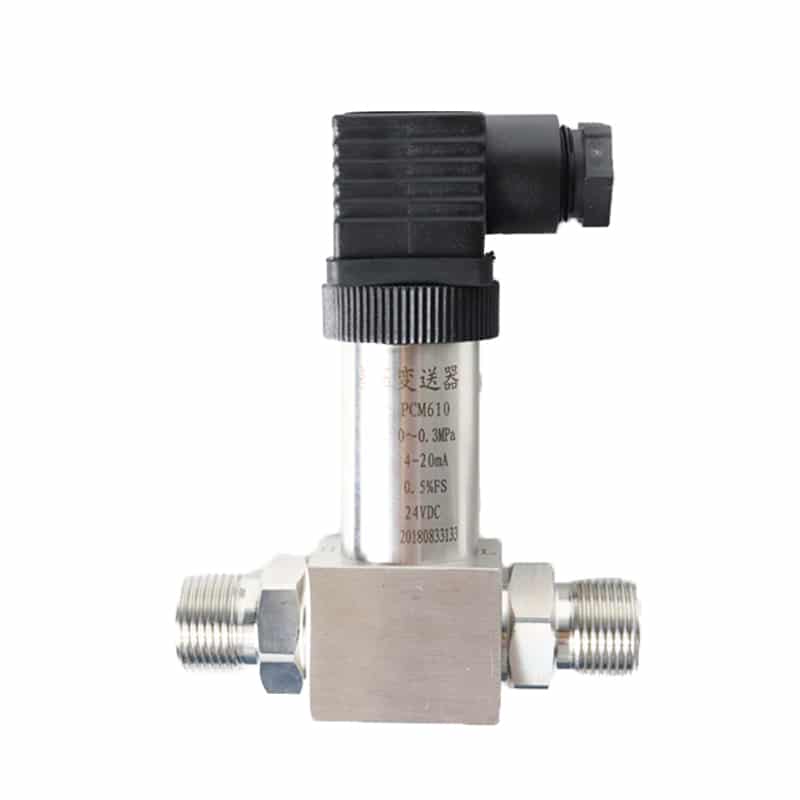What is a pressure transmitter?
Pressure transmitter is a mechanical device that converts the expansion force of a liquid or gas sample into an electrical output. The device converts the pressure into an electrical signal by means of a transducer. This type of sensor, also known as a pressure transducer, usually consists of a pressure sensitive surface area made of steel, silicon or other materials, depending on the composition of the analyte. Behind these surfaces are electronic components capable of converting the force applied to the pressure sensor by the sample into an electrical signal.
Pressure is typically measured in terms of force per unit surface area and is expressed as the value required to stop the expansion of a liquid, gas or vapor. Various derived units are used to quantify pressure, including
As a ratio/relationship of Pascals (Pa) or individual Newtons per square meter (1 N/m 2 ).
The value of pounds per square inch (psi).
Pressure-sensitive environments such as the gas, petrochemical, laboratory and pharmaceutical industries often require pressure transmitters to monitor the forces acting on liquids and gases in Pa or psi values. This requires the precise integration of pressure transmitters into fast electrical conversion devices to ensure accurate results and real-time delivery.
Pressure measurement
Pressure transmitters can measure absolute, gauge or differential pressures.
Absolute Pressure
Absolute pressure is the perfect vacuum considered to be 0 psi! We refer to vacuum pressure as 0 psi (a). Atmospheric pressure is typically about 14.7 psi (a).
Gauge Pressure
The most common pressure measurement is gauge pressure, which is the total pressure minus the atmospheric pressure.
Atmospheric pressure is 0 psi (g).
Differential Pressure
Differential pressure is the difference in pressure (or differential pressure). Pressure The distributed force acting vertically on a unit area.
Difference between a pressure sensor, pressure transducer and pressure transmitter
General definitions a pressure sensor is typically a millivolt output signal, a transducer has an amplified voltage output, and a transmitter offers a 4-20mA output signal.
Use a pressure transducer before a pressure transmitter. A pressure transducer overwrites one form of energy into another form of energy. For example, suppose a pressure transducer converts Celsius to analog energy (mV).
A pressure transmitter, on the other hand, overwrites the electrical signal provided by the sensor to a larger electrical signal. For example, the millivolts (mV) from the sensor are converted by the transmitter and transmitted as a voltage or mA. Typically, this more significant electrical signal lies between 1-5 volts or 4-20 milliamperes. Transmitters send the output of your process, liquid or gas process to your computer.
How does pressure transmitter work?
Although there are many types of pressure transmitters, they work in almost the same way. Pressure transmitters work by measuring pressure and converting it into an analog electrical signal. In general, pressure transmitters consist of three main components:
- The pressure sensor
- The measurement circuit
- Process connection
The installation of a pressure transmitter measurement system consists of three components:
- The pressure guide tube
- Central measuring diaphragm
- Isolation diaphragm (with silicone oil)
During the operation of the pressure transmitter, the pressure of the medium is transmitted to the central measuring diaphragm, where it is measured. The pressure difference deforms the sheet between these parts. When this deformation is measured, the magnitude of the pressure difference can be measured. This measured pressure difference is converted into an analog electronic symbol that can now be sensed.
The purpose of the pressure transmitter
Pressure transmitters are commonly used in a wide range of industrial applications. Offshore drilling and oil exploration typically use pressure transducers to measure the difference in values between the inside and outside of pressure sensitive equipment. Different parameters must be maintained to ensure that the drilling and gathering process is carried out to ethical and efficient standards. This is also true for onshore petrochemical, gas and chemical facilities. As a result they significantly reduce maintenance costs. Pressure transmitters are suitable for a wide range of situations, as they can be connected to other systems, such as electrical circuits.
Many industries use pressure-sensitive transport and storage equipment to maintain optimal product condition, which must be accurately monitored to ensure safe delivery and final application. Laboratories also use pressure transducers to measure the relative pressure of a vacuum chamber to the atmosphere, supporting a large range of emerging research.
In addition, pressure transmitters are widely used in the maritime sector. In the maritime industry, everything revolves around accountability and efficiency. A popular model in this field is the PCM300T pressure transmitter , which is very compact and durable. In the maritime industry, the transmitter provides information about the liquid or gas process to the cabin or bridge for monitoring purposes.

How to calibrate a pressure transmitter?
- To determine whether the wiring is correct, the transmitter has a current (two-wire), voltage (three-wire) output.
- The specific adjustment: A zero point correction of the transmitter B pressurized calibration, the actual calibration weight value / display value = FC full scale correction (0-1.5)
- Regular pressurization and return to zero Check the sensor linearity and repeatability to determine the stability of the sensor.



